
According to recently released information from SPRI, Waltham, Mass., the trade association representing suppliers of flexible sheet membranes and related components, the significant gains recorded in the single-ply industry for 2003 continued in 2004. Most materials saw double-digit increases over the previous year, which itself had been strong. According to SPRI's statistics, TPO thermoplastic shipments were up 18 percent in 2004. Although a year-to-year comparison was not available for the "other thermoplastic category," there were significant increases posted there as well. Thermoset shipments in total were likewise up 17 percent over 2003 numbers.
We spoke to several single-ply manufacturers to get their view of the current market, learn about new products for 2005, and discuss developing trends in the industry, most notably the growing emphasis on cool roofing and sustainable products.
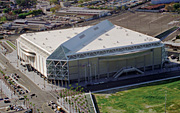
Burkeline: On the Front Lines of the Cool Roofing Movement
Burkeline Roofing Systems, San Jose, Calif., supplies CSPE Hypalon (about 75 percent of its business) and TPO (25 percent). New for 2005 is a line of CPA Elvaloy called Ecoseal, available in different thicknesses as well as a fleece-backed fully adhered version. This product can be set in low-rise adhesive or hot asphalt. According to Stephen Roades, vice president, Environmental Products and Roofing, the company offers "a long-term proven performing membrane that carries the longest warranty in the single-ply business."The view from California (as of press time in early May) is that while the year has started off relatively slowly, it should gain momentum as the weather becomes more favorable. "We probably will see continued growth in the single-ply market segment," says Roades. "The only alarming factor is the continued rise in raw material pricing, which will have an effect on single-ply costing throughout the year."
Commenting on the trend toward environmentally friendly roofing products, Roades says that without question, California is leading the way. "In California, white sheet single-ply will see an increase due to the proposition [Title 24] requiring cool roofing. It seems that this movement will and has been moving across the country," he says. "The green materials movement will impact certain elements and manufacturers in the single-ply realm. It has become a very significant movement on the West Coast and is gaining a large following throughout the country."

Carlisle SynTec Adds PVC to the Mix
On the opposite side of the country is Carlisle SynTec Inc., Carlisle, Pa., which offers EPDM, TPO and PVC. In addition, the company supplies fleece-back versions of EPDM and TPO that can be applied with low-rise polyurethane foam adhesive, hot asphalt and cold process adhesives. Also available are a wide variety of accessories, adhesives, sealants, coatings and fasteners.Carlisle recently announced that in addition to the existing product line, which includes EPDM with factory-applied SecurTAPEä products, factory-applied SecurTAPE on reinforced 45-mil membrane is now available. "This affords Carlisle's contractors a means to dramatically improve productivity on the roof," says Steve Schwar, national sales manager. "Contractors who have utilized the material boast they have reduced the time to complete a seam by as much as 75 percent, as compared to conventional methods."
Available as of April, Carlisle is offering 60-mil sheeting in a 25- by 100-foot format. This sheet is packaged with a single fold similar to the 20-foot-wide version. The 25-foot-wide sheeting is designed for larger, more wide-open projects where maximum productivity is desired. This product is manufactured with a 3-inch-wide factory-applied SecurTAPE.
Carlisle is also offering PVC, which, according to Schwar, "allows building owners, architects and roofing contractors who prefer the benefits derived from a PVC-based roofing membrane to also enjoy the service and support of Carlisle and its network of manufacturer's representatives, distributors and authorized applicators." In addition, Carlisle has added cold-applied adhesive to its lineup.
When asked what sets Carlisle apart, Schwar responds, "Our expansive array of accessories is intended to help reduce rooftop labor and installed system costs. We are the first to manufacture membrane with factory-applied tape and we offer services such as Proposal Writer and lifecycle cost analysis."
As for the market overall, Schwar exudes optimism. "Contractors generally have healthy backlogs, bid activity is favorable and the design community seems to be very busy," he says. "Single-ply membranes, especially EPDM and TPO, should continue to outpace the growth of other commercial roofing products."
Schwar agrees that sustainability is a major area of interest for 2005. "Many specifiers of LEED-compliant projects are seeing the need to look at a wider number of factors when evaluating a roof system. Sustainability is a hot issue since roofs with the best lifecycle performance and greatest longevity will have the least impact on the usage of precious resources and the minimization of rooftop waste," he says. "We see this as a positive trend since a focus on sustainability translates to the selection of more durable components ... We should expect this trend to continue, specifically in the Sunbelt areas of the country where highly-reflective ‘cool roofs' are desirable."

Cooley Building Products: It's an Illusion
Cooley Building Products, Pawtucket, R.I., manufactures PVC Elvaloy (about 98 percent of its business) and custom TPO (roughly 2 percent). A recent introduction from Cooley is Illusions, a single-ply membrane with an imprinted surface that looks like asphalt shingles. It is extremely lightweight, is applied over insulation, and is primarily designed for residential use. "You can install three of these roofs vs. one asphalt shingle roof for a 150-square area," says Steve Siener, vice president and business manager for Cooley. The company plans to follow up this mechanically fastened system with one adhered with a water-based adhesive."We sold a version of this product for a number of years in Florida. It was used for reroofing modular homes," explains Siener. "We've spent a lot of time working on it. It's almost a photographic reproduction-it's shaded and embossed." The surface even feels like shingles and is available in gray, tan and light green. Cooley is currently working on slate and tile patterns.
According to Siener, Cooley has held focus groups with homeowners and contractors and response rates for Illusions are high. Though primarily a private label company, Cooley is looking for distributors and reps for this particular product.
Also new from Cooley is Evolution, a white single-ply membrane, specially engineered for use in both mechanically fastened and fully adhered roofing applications. According to Siener, this makes it easier for contractors-they only have to hold one product. He adds that where most single-ply membranes are designed with more thickness at the bottom of the membrane, Evolution is engineered to have more thickness on the top of the membrane, offering even more defense against the elements. For instance, 45-mil Evolution has 22 mils on top of the fabric, whereas most standard single-ply membranes have only 14 or 15 mils above the fabric.
Overall, Siener characterizes the market as extraordinarily price competitive and sees thermoplastics growing at the expense of EPDM, primarily because of the emphasis on white reflective roofing. Siener points out that with rising oil prices, manufacturers are currently eating price increases but will have to eventually pass them down to the contractor.
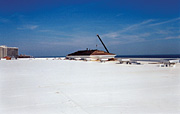
Custom Seal Roofing Systems: User Friendly
Custom Seal Roofing Systems, Fremont, Ohio, offers prefabricated PVC systems (about 75 percent of its business) and prefabricated TPO accessories (25 percent), including peel-and-stick.David C. Thomas, sales manager, describes Custom Seal as a small, user-friendly company. What sets the company apart? "We have proprietary machines for the prefab TPO accessories," says Thomas. "We offer a 20-year full systems warranty with expanded polystyrene (EPS) direct to metal deck-with PVC or TPO. It's a Class A system." Thomas believes that Custom Seal is leading the charge with its response to the polyisocyanurate shortage.
Custom Seal also goes to the next level by partnering with Arizona State University, which acts as a third-party independent auditor. Together Custom Seal and ASU have developed and implemented customer satisfaction surveys. Building owners get a call every year after a roof is installed to see how the roof is performing and if there are any problems. "This way, problems are prevented and the roofer gets credit for a good job," explains Thomas. "We get results and can respond. We want 100 percent customer satisfaction."
Thomas agrees that the single-ply market is growing because of the emphasis on cool roofs and Energy Star-rated products. He also attributes the popularity of single-ply systems to safety concerns. "It's safer to put down single-ply," he says. "And it's more economical."
Thomas sees TPO gaining market share since cool roofing and the use of sustainable products are becoming requirements in a growing number of places. "People want materials that are recyclable and they want reflective roofs," he says. "The urban heat island effect makes it necessary to have more effective products and more green products."
Though Firestone recently announced that it will no longer supply PVC, Thomas doesn't see this as a trend, though he concedes that more companies are getting in to TPO than PVC. "Only some areas of the country are anti-PVC," he says. "It DOES have a place in the market. It's grease resistant, chemical resistant, heat weldable and reflective. The negatives are plasticizer migration." In his view, "TPO is the best of both worlds." The problem is that some consultants are still taking a "wait-and-see" approach to TPO. As Thomas phrases it, "Everyone wants a new technology but they want it to be 25 years old. They are afraid of the unknown."
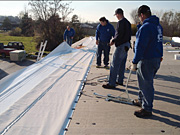
Duro-Last Roofing Inc.: Prefab is Fabulous
Duro-Last Roofing Inc., Saginaw, Mich., also manufactures custom, prefabricated PVC. "We focus on one technology and do it very well," says Fred Sitter, marketing communications director.New in 2005 is the fact that Duro-Last is now on the GSA schedule, making it easier for government buyers to purchase its product. "We've also launched a new marketing campaign that emphasizes the advantages of our prefabricated roofing systems for both contractors and building owners," says Sitter. "Our corporate Web site has been revamped to reflect the new marketing campaign, and also to provide better access to information for contractors and building owners."
The company is investigating installation alternatives that will enable even faster application as well as improved resistance to wind uplift by using a combination of mechanically attached and adhered technologies.
Sitter believes that custom prefabrication sets Duro-Last apart. "All Duro-Last roofing systems are fabricated in one of our manufacturing facilities to fit each building precisely," he explains. "Up to 85 percent of membrane seaming is completed in our factory, which benefits contractors by lowering rooftop labor costs, enabling a much faster installation, and reducing the potential for rooftop installation errors."
Another company attribute is that it sells directly to authorized contractors, "removing distributors and other ‘middlemen' from the supply chain," according to Sitter. "This allows us to keep our pricing very competitive, fill orders quickly, and resolve issues expediently. We have a large, nationwide contractor support network, and offer unparalleled training programs, sales assistance, engineering support, marketing materials and quality assurance."
For Duro-Last, the first quarter of 2005 was the best in company history-and that's on top of a record year for 2004. "We're finding that building owners, specifiers and other decision makers are taking more notice of our presence in the marketplace and clearly understanding the advantages of our roofing system," says Sitter.
Addressing the trend toward environmentally friendly products, Sitter agrees that the changes to California's Title 24 building energy code, scheduled to take effect in October will have a big impact on roofing decisions in that state. Moreover, "California often sets the national pace when it comes to environmental decisions and, as energy savings become quantified in California, cool roofing requirements will most likely make their way into many other state and local codes. In fact, cool roofing legislation is on the books in Chicago, Atlanta and other locations, and as many as 30 states are in various stages of incorporating cool roofing language into building codes."
When asked to comment on the environmental case against PVC, such that it is, Sitter says that while there are still pockets of resistance to the use of PVC building materials, "The USGBC's Technical and Scientific Advisory Committee recently affirmed in their Assessment of Technical Basis for a PVC-Related Materials Credit in LEED® (December 17, 2004), ‘available evidence does not support a conclusion that PVC is consistently worse than alternative materials on a lifecycle environmental and health basis.'" Thus, "We expect that this report and other evidence will continue to support the fact that the use of PVC roofing systems can be part of effective sustainable building design."
In general, Sitter believes that "Cool roofing initiatives are being run through ‘public purpose' or utility energy efficiency programs. Most do not specifically address cool roofing." Instead, they accept applications for rebates or grants through programs that cover a variety of potential technologies and/or other measures that improve efficiency. Some utilities have discovered that their guidelines for acceptance are too restrictive for many good projects to qualify, or the hurdles so numerous that potential applicants are discouraged and do not apply. "This has led some utilities to begin reviewing and/or modifying their programs in order to address rapidly changing technologies (Xcel Power in Minnesota, for example)," continues Sitter. "A good source for information is the U.S. Department of Energy Federal Energy Management Program (FEMP) Web site: www.eere.energy.gov/femp/program/utility/utilityman_energymanage.cfm. Visitors can click on any state on the map and find information about that state's programs."
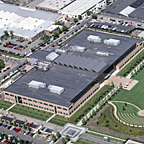
Firestone Building Products Co.: Focusing on the Environment
Firestone Building Products Co., Indianapolis, offers EPDM and TPO in a wide range of thicknesses and sizes. "Although our EPDM volume is larger then our TPO volume, TPO has grown at a faster rate," says Bob Delaney, vice president of sales and marketing for Firestone.As it celebrates its 25-year anniversary, Firestone has introduced several new product enhancements this year, including UltraPly TPO XR fleece back TPO, and RubberGard MAX PT and RubberGard LSFR PT pre-taped EPDM panels.
"What really sets Firestone apart is our single-minded focus on the commercial roofing contractor as our most important customer," says Delaney. "We strive to offer products and services that help our contractors succeed and make Firestone the easiest company in the industry to do business with. Also, Firestone is the only company in the low-slope commercial roofing industry with the capabilities to manufacture quality roofing systems for every major market. We offer contractors one source for superior products, installation expertise, technical support and an excellent warranty program."
Delaney believes that the 20-year history of success in the single-ply roofing market has accelerated in the last few years, "to the extent that single-ply is today's most popular choice in roofing systems, with over 50 percent of the market." And he firmly believes that environmental concerns will continue to play a larger part in the selection of roofing systems. "That is why Firestone exited the PVC roofing market, instead choosing to focus our efforts on more environmentally acceptable TPO products and systems," he explains. "Over time, we also feel that both cool roofing and environmental concerns will lend greater weight to systems properly insulated with environmentally responsible insulation products such as our Firestone ISO 95+ polyiso insulation, which contains no HCFCs. Due to their overall sustainability, systems with outstanding longevity, such as Firestone RubberGard EPDM, will also gain increased favor."
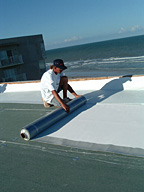
GAF Materials Corp.: Diversity is Key
GAF Materials Corp., Wayne, N.J., offers TPO, PVC and EPDM. "New trends in construction are emerging every day and TPO is one of the fastest growing products ... with an average 20.4 percent growth over the last three years," says Diane Gola, marketing communications. "Self-adhering TPO is quickly becoming the system of choice for residential projects, smaller commercial projects and jobs with limited access."New for GAF in 2005 is Freedom self-adhering TPO, available in 10-foot widths for use on larger commercial properties or on roof areas with multiple penetrations. In addition, GAF has developed patent-pending RapidSeam technology, which saves labor by eliminating over 95 percent of field seam preparation. This technology comes standard on 10-foot-wide Freedom TPO, and will be available on the 5-foot-wide product later in 2005.
"Every roof is different, which is why GAF offers virtually every major low-slope roofing technology," says Ted Marcopolus, vice president of Marketing Services. "This in turn allows our contractors to match the right technology to each individual roofing project. So if a roof just needs a simple repair, we have the products to accomplish it. If the roof is beyond simple repair, but still salvageable, the contractor can offer our Topcoat roof restoration system, which allows the owner to save up to half vs. the cost of a new roof. And when the roof finally needs to be replaced, we have literally thousands of asphaltic and single-ply system combinations to choose from. This diversity of choices sets GAF apart, and helps us-and our contractors-to avoid falling into the trap of routinely pushing a single type of roofing system as the solution for every project.
Commenting on the trend toward environmentally friendly roofing, Tim Larson, director of marketing says that it is positive for the single-ply market. Yet, "While it is important that we continue to focus on new and innovative technologies, it is also important to remember the tried and true roofing solutions that have served us best in the past," says Larson. "TPO and PVC have continued to perform well with the improvements in UV stabilizers and polymer compound, and the past performance of BUR and asphalt modified systems have for decades performed with great reliability."

IB Roof Systems: Order Online
IB Roof Systems, Eugene, Ore., a supplier of PVC membranes, has many new offerings this year, including Traditions, a membrane imprinted with an architectural-style shingle pattern. "It is designed to give building and homeowners the shingle look they want when their slope may too low to install actual shingles and it allows installations on more substrates than traditional shingles," says Shawn Stanley.IB Roof Systems has also applied an acrylic finish on all its membranes. "This keeps the membrane cleaner for a lot longer length of time and adds about five to seven years to the life of the roof," says Stanley. In addition, the company has developed 12 select IB colors for contractors to choose from. "This opens up doors for customers who want something other than white or black," says Stanley. "IB also has the capability of matching over 450 other colors if a specific non-standard color is desired."
Stanley adds that IB Roof Systems has met codes for Florida-wide and Metro-Dade use, and has representation in place to supply that market. Finally,
"We have developed a new estimating program that is Excel-based making it more universal and easier to use for most contractors," says Stanley. "It makes estimating easier for IB-authorized installers because it develops a material list and a completed order form so when the contract is signed the contractor simply prints the form and faxes it or e-mails it right from their computer."
In addition to a new Web site, IB Roof Systems is introducing a more streamlined approach to shipping sales literature and samples by starting an online order fulfillment program. "IB sales reps will go online to place their customers' orders, which will be filled and shipped that day or the next," says Stanley. As of press time, this service was scheduled to start in May 2005.
"IB gives their authorized installers an edge by offering a 100 percent material lifetime warranty for all residential projects and up to 25 year material warranty for commercial projects," Stanley continues. "IB Roof Systems prides themselves by offering the best accessory line in the industry. We have over 125 standard accessories to make a project flow smoother, look better and provide the customer with error-free details. We also have a custom project team that will custom fabricate non-standard details to give a customer a great option for difficult details or details that are highly repetitive on a particular project."
Stanley believes that the single-ply market has never been stronger. "We are seeing growth in all brands and makes industry wide, and the future looks bright as well," he says. "Cool roof initiatives will continue to grow as more and more evidence is introduced proving that these systems reduce urban heat island effects and reduce a building's utility bill. I do think that we will see a big increase in the design of garden roofs. As more and more membrane manufacturers develop systems around garden roof specifications, prices will come down and the market will look upon them as the ultimate environmentally friendly roof."
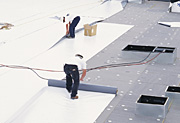
Johns Manville: Out in Front on Title 24
Johns Manville Roofing Systems, Denver, offers EPDM, TPO and PVC. In 2005, the company has decided to make a major investment in educating specifiers, contractors and consultants about the impact of Title 24 as it relates to low-slope roofing systems in California. The company recently assembled a top-level group of speakers and partnered with the Architecture Department, City College of San Francisco; the School of Architecture, University of California; and AIA California to present a symposium in San Francisco and Los Angeles on this topic.When asked what sets Johns Manville apart, David Scheirer, group manager of the Johns Manville Roofing Institute (an extension of the company's education program, Better Understanding of Roofing Systems Institute), points to the company's commitment to educating roofing contractors. "The program offered under the JM Roofing Institute is specifically designed for members of its Peak Advantage contractor program and the sales and technical representatives and distributors who support them," Scheirer explains. "The company provides enhanced onsite application training for its new products to improve installation productivity and quality. This effort consists of system-specific technical videos and on-the-job technical training. JM also provides product and system training through its roofing distribution partners. These system-specific seminars demonstrate the feature/function/benefit of roofing products in the classroom and through hands-on demonstrations."
When asked about the single-ply market overall, Sarah Tholen, manager of marketing communications, says that year-over-year, TPO is up 18 percent, PVC is up 2 percent and EPDM is up 17 percent. As for overall trends, "We anticipate that some form of the cool roof initiative that goes into effect in October in California (Title 24) will spread to other states," she says. "We believe there will be increased interest in energy-efficient and cool roofs in the future that will have a major impact on the single-ply market."
Tholen says another trend is for single-ply systems to be offered in more colors, as contractors and specifiers are looking for roofing solutions that are architecturally pleasing. In addition, "The hot topics in thermoplastic membranes are permanently heat-welded seams and mechanically attached systems that are cost effective," she says.
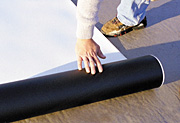
MuleHide Products Co. Inc.Special Solutions Support
Mule-Hide Products Co. Inc. offers EPDM, TPO and self-adhering TPO, and PVC and Dec-K-ing Walkable PVC.New for 2005, Mule-Hide is offering a free reference tool for professional applicators of the company's expanded line of low-slope maintenance and repair products. This tool consists of slide charts bound together into one booklet. There is a slide chart for each low-slope roof type: built-up roofing, EPDM, Hypalon, metal, modified bitumen, PVC and TPO. Users select solutions based on specific roof problems whether spot patching, general repairs or maintenance. The applicable products are displayed in a "recommended solutions" window.
When asked what Mule-Hide offers contractors that sets the company apart from competitors, Baumann points to a focus on customer service. "Mule-Hide is so dedicated to meeting contractor needs we even designed a symbol to represent the service level we provide. We call it ‘Special Solutions Support,' which stands for the following: individualized assistance, attention to detail, project level technical assistance and alternative methods of installation."
Baumann also points to the fact that Mule-Hide is available nationwide through ABC Supply Co., with over 270 locations, where field technical representatives hold ongoing training seminars.
Regarding the overall market, "Single-ply had a tremendous year in 2004 with both EPDM and TPO enjoying double-digit growth. That trend is continuing in 2005," says Baumann. She notes that the "green" trend is gaining momentum as well, and is strongest in urban areas where the urban heat island and energy savings are a major concern. Baumann defines "green" as meaning both healthy for the environment and sustainable. And she believes that it is important to consider the health of roofing crews and building occupants as well. Thus, "The trend for flame-free, fume-free roofs is driving strong growth in self-adhering systems." To this end, Mule-Hide offers self-adhering modified bitumen and TPO as well as EPDM fully adhered with a water-based adhesive.
"Cool roof trends continue to drive growth in white single-ply membranes and elastomeric acrylic coatings for cool roof restorations and as a field-applied coating on BUR, mod bit or black EPDM roof," continues Baumann. "Mule-Hide offers a complete line of cool roof solutions." Pointing to cool roofing initiatives in California, Portland, Ore., Chicago, Pennsylvania, and the Twin Cities, Baumann observes, "Many other cities are in the process of reviewing building code requirements for stormwater runoff -Chesapeake Bay, Md., Dallas, Madison, Wis., and Boston are a few."
Mule-Hide also offers garden roofs with the GreenGrid™ system, featuring lightweight modules that arrive at the building site pre-planted and ready for installation. The modules can be placed directly onto the roofing membrane or other roof types and since they are composed of recylced plastics can earn LEED points. Baumann emphasizes the company's industry-exclusive "Wrap-Around-Warranty," which covers both the roofing system and the garden roof, and notes that the GreenGrid modular system is currently specified by the City of Chicago.
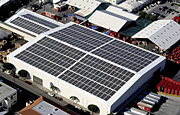
Sarnafil Inc.: 40 Years of Experience
Sarnafil Inc., Canton, Mass., offers PVC roofing systems. New in 2005 is a peel-and-stick PVC, an industry first. Also, the company's Décor system (single-ply with the appearance of metal roofing) is now available in a batten-seam version, in addition to the previously available standing-seam style, which gives designers more options.Jay Thomas, director of marketing, says that Sarnafil's 40 years of experience sets it apart from others in the industry. "It brings peace of mind to the contractor and building owner," he says. "They know they are getting a proven product." He cites the company's innovation, installation options and technical support as other attributes.
As for the single-ply market overall, "It's doing well, especially thermoplastics and white membranes in general," he says. "Common sense dictates that the trend toward energy efficiency will continue."
Thomas agrees with Fred Sitter from Duro-Last that the issue of environmental concerns with PVC is not much of an issue at all. "It was debated for a while in Europe but it is still the largest market segment there," he explains. "It's hard to make a strong case against it and the membranes do last a long time"-an important attribute when considering sustainability.
Interest in garden roofs is also growing and Sarnafil is active in that area. "It is certainly a sustainable option and is getting more attention," says Thomas. The same is true for solar roofing. Sarnafil recently signed a worldwide agreement with Solar Integrated Technologies. "They take their photovoltaic cells and adhere them to our membrane. We work with contractors to install the system," says Thomas. He notes that state-, municipal- and utility- sponsored rebate programs are critical. "Solar roofing isn't cheap; you need an incentive."

Stevens Roofing Systems: Where the Market Wants to Be
Stevens Roofing Systems, Holyoke, Mass., offers TPO (Stevens EP, about 50 percent of its business) and the rest is Hypalon and PVC (Stevens EV).At press time, Stewart Snoddy, vice president, Strategic Accounts, told us that Stevens is working on new products and systems that will be announced in the next three to six months. Overall though, Snoddy says that what sets Stevens apart from its competitors is its selection of hot-air weldable single-ply membranes. "It may be a narrow product focus but there is a broad market for its application, especially with the emphasis on white reflective membranes," he says. "Stevens has a proven product. We offer a depth of experience going back 25 years. For the architecture and engineering community and building owners we offer single-ply membranes that help with reflectivity, sustainability, LEED points, cool roofs, etc."
Overall, Snoddy characterizes the market as very robust and believes the trend will continue. "All single-ply systems are doing well," says Snoddy. "TPO is the strongest, PVC has seen some increases and EPDM is strong as well."
Snoddy says that the cool/green roofing trend will continue to be a big issue. "What started out at the grass roots level gained some interest in the architectural community. And now that the government has become involved, the whole issue has taken off," he explains. "In the city of Chicago major corporations are building their corporate campuses with LEED points, garden roofs, etc. They don't want to be considered poor stewards of the environment. The whole area is huge."
Regarding the PVC issue, Snoddy agrees with Fred Sitter from Duro-Last and Jay Thomas from Sarnafil: "If even the USGBC says that PVC isn't the worst thing in the world, the product will remain and will see growth."
Overall then, Snoddy expects Stevens to have an excellent year with very strong growth. "We're well positioned with the increasing emphasis on white reflective membranes. We're where everyone wants to be," he says." We are working diligently to take the technology we've developed and move forward to third- and fourth-generation applications."
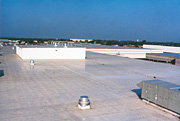
Versico Inc.: A Full Product Line
Versico Inc., Akron, Ohio, offers EPDM (70 percent), TPO (20 percent), and PVC (10 percent). PVC is actually new for the company as is the availability of a TPO fleece-back, applied in cold adhesive with up to a 15-year total system warranty." We like to think we offer a great full product line, flexibility, attention to detail and fast response to the market place," says Mike McAuley. "The single-ply market is robust and we are expecting a strong year assuming the economy remains strong ... We are seeing increased trends in the Sunbelt states to cool roofs that also include the utilization of more insulation. There is also a move to green roofs in a number of states and this move will continue to challenge the single-ply market place to develop solutions that are environmentally friendly and efficient."
Report Abusive Comment